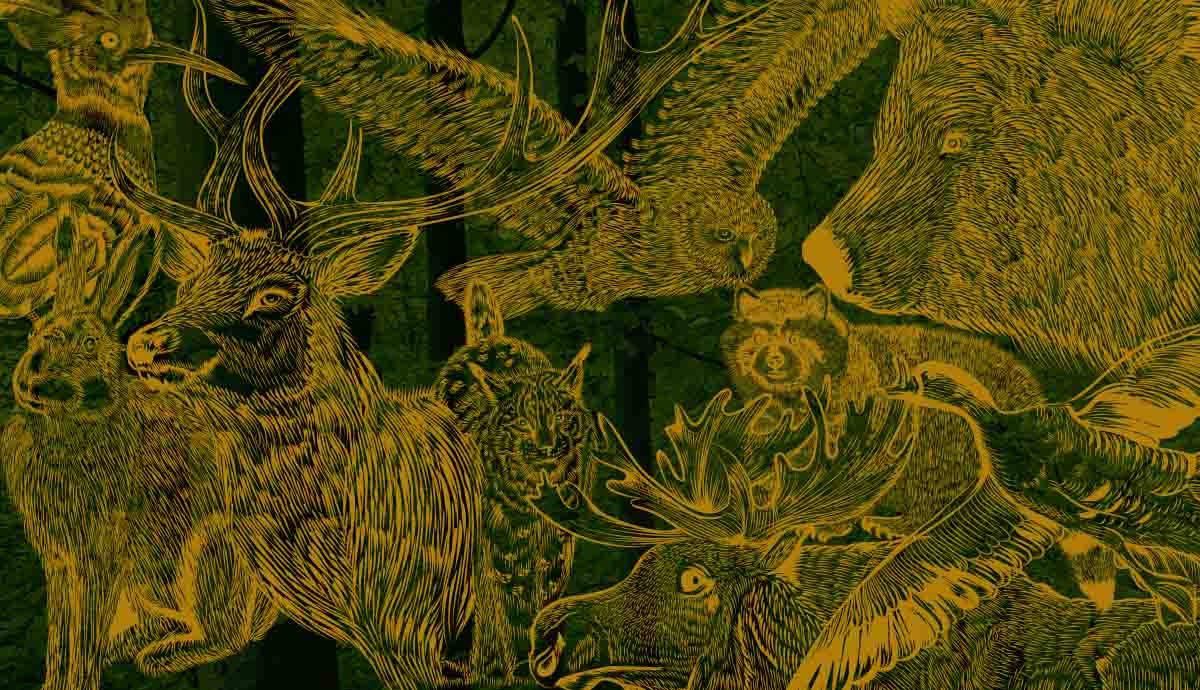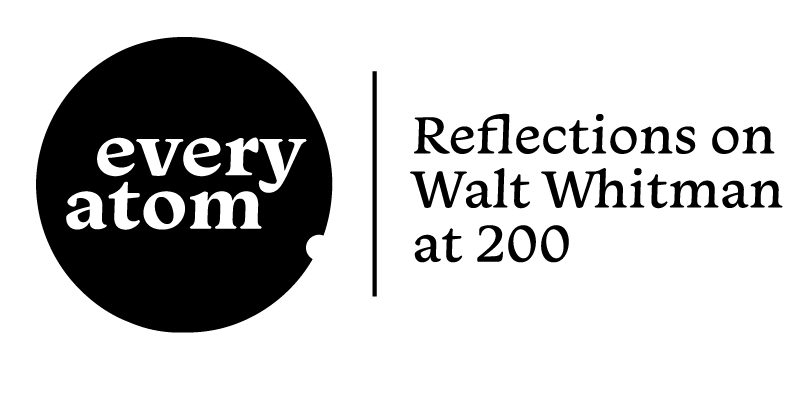Every Atom | No. 69
Introduction to Every Atom by project curator Brian Clements
“I think I could turn and live awhile with the animals” has always seemed to me one of the more stunning moments in “Song of Myself.” Appearing at the beginning of what would later become section 32, at almost the exact center of the poem, the half-line is surprising in its stylistic simplicity and emotional modesty, which are echoed in its rough pentameter as the unstressed syllables at the end trail off into ellipsis. The second half of the line, “they are so placid and self-contained,” feels equally understated, coming as it does from a speaker who famously says, near the end of the poem, “I am large…. I contain multitudes.”
Another surprise: As Whitman continues, his embrace of the animals introduces what is probably the poem’s most direct complaint about people, so consistently celebrated elsewhere. The animals “do not sweat and whine about their condition,” he says, and continues with a small catalog of human behaviors that animals don’t share.
In the lines that follow, the poet finds “tokens” of himself in the animals, implicitly assuming a multitudinous self that spans “untold times” (and incidentally suggesting, for the contemporary reader, a kind of reverse evolutionary wisdom). But in a final startling turn, he comes back to the immediate present and chooses an “amie,” a “gigantic beauty of a stallion, fresh and responsive to my caresses.” The eroticism of these and the lines that follow is pure Whitman; they startle only because of the identity of the embraced.
What ultimately makes this brief interlude with the animals so remarkable is the context of the poem as a whole. Animals are mentioned in occasional lines throughout “Song of Myself,” but the only extended treatments of them occur in this section and the lines that surround it, and in an earlier foreshadowing in what would become sections 13 and 14. The “I think I could turn” section is immediately preceded by a catalog that includes several creatures and finds the poet “stucco’d with quadrupeds and birds all over,” and it’s followed by a section (later 33) that begins with the poet traversing the world, passing places inhabited by animals as well as people. But gradually the animals disappear from even that long and ecstatic section, and that’s pretty much it for the final 567 lines of the poem.
But a little like the classic hero’s descent into the underworld, or Dante’s into the Inferno, Whitman’s modest descent into the life of the animals seems to me not only a moving contrast to the ecstasy of much of the poem, but also a preparation for its magnificent final manifestations.
Recommended
Nor’easter
Post-Op Appointment With My Father
Cedar Valley Youth Poet Laureate | Fall 2024 Workshop







